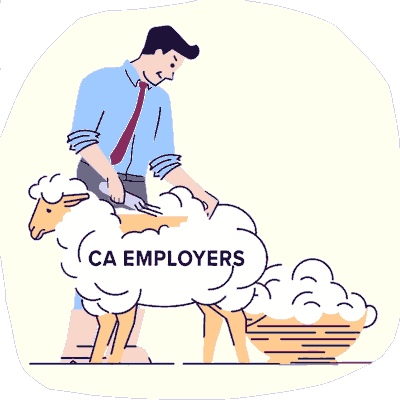Workers’ Comp Has a Serious Data Problem

Anyone who’s been hurt at work (or treated an injured worker) knows that the workers' comp system is in crisis. To fix it, stakeholders need reliable, verifiable data—but that data is woefully in short supply.
The workers’ comp data that researchers and policymakers use almost always comes from insurers. And as we explore below, even industry insiders recognize that these insurer data are often:
- Incomplete
- Low-quality
- Not independently corroborated
Worse, insurers use their data to push narratives that benefit them; i.e., that providers are overcharging or that employers’ rates need to increase. But these narratives—and the data upon which they’re based—often fall apart under scrutiny.
daisyBill keeps track of every scrap of data generated from millions of bills, payments, and treatment authorization requests annually. And unlike insurer data, daisyBill data are publicly available and open to analysis (properly anonymized, of course).
Below, see how insurance industry insiders acknowledge the problem with insurer data—and how daisyBill is doing our part to contribute more trustworthy numbers.
Workers’ Comp’s Data Desert
In his recent marketing post on Work Comp Wire, Stan Smith, CEO & Founder of Gradient AI, makes a valid point about insurer data (emphases ours):
“If data is incomplete, outdated, or inconsistent, predictions become unreliable, leading to flawed risk assessments and poor decision-making. An insurer my company works with recently found that 40% of its most critical data fields were missing or incomplete…
…This issue is widespread—missing or inconsistent data limits an organization’s ability to identify patterns and make informed decisions.”
Joe Paduda echoes the sentiment on Managed Care Matters, and adds (emphases ours again):
“...I wholeheartedly agree; much of the work comp data we’ve worked with is pretty crappy…and it hasn’t improved over the last few years…
…many payers outsource data entry and management to third parties…There are little to no efforts to assess, much less ensure vendor data quality.”
What Smith and Paduda are pointing out is more than theoretical—and the effects are far worse than poor risk assessment and decision-making by insurers. “Crappy” data doesn’t only drive insurer policy; it drives how governments manage the workers’ comp system.
CA: A Model of Unreliable Data
California demonstrates how low-quality data can distort attempts to reform workers' compensation.
For example, California’s Workers’ Compensation Insurance Rating Bureau (WCIRB) is funded exclusively by its insurer members. Somehow, this Bureau has positioned its suspect, self-reported insurer data as the basis of policy recommendations. Currently, the WCIRB is requesting that California increase workers’ compensation insurance rates, despite national data indicating that workers’ compensation is already highly profitable for insurers.
The WCIRB bases its recommendations exclusively on data—which no one verifies—from its insurer members. A disclaimer on each WCIRB report reads (emphases ours):
“This information presented reflects a compilation of individual insurer submissions of information to the WCIRB. While the individual insurer data submissions are regularly checked for consistency and comparability with other data submitted by the insurer as well as with data submitted by other insurers, the WCIRB can make no warranty with respect to the information.”
While unable to make any “warranty” regarding their data, the WCIRB demands more money from employers. What these employers don’t know (and have no data on) is how much of that money actually goes to their employees’ care—as opposed to insurance executives’ yacht funds.
The California Division of Workers’ Compensation (CA DWC) also displays a complete lack of data discipline, repeatedly failing to gather credible research figures:
-
The CA DWC never established an electronic Utilization Review (UR) data collection system, even though state law requires it. Regardless, California will award $300,000 to the RAND Corporation to study the non-existent data.
- California law requires the CA DWC (in consultation with the WCIRB) to collect comprehensive data through the Workers’ Compensation Information System (WCIS), with penalties for claims administrators that fail to report data to WCIS. Yet, the CA DWC declared that reporting to WCIS is “voluntary” for claims administrators.
California may perform research and reform theater. But without real data, the state is flying blind.
daisyData: A Window Into What’s Really Happening in Workers’ Comp
With literally no one gathering verifiable, unbiased data on workers’ comp, daisyBill took it upon ourselves to compile and share every possible data point from our clients' bills and payments.
Our data represent:
- 6,924 providers
- 879 insurers, self-insured employers, Third-Party Administrators, and network payers
- Over 3 million bills for workers’ comp treatment annually
We share this data publicly in two ways:
-
Our Reimbursement Overview page documents real-world reimbursement rates instead of the providers’ billed charges that insurer shills use to inflate workers’ comp medical costs.
These data expose the devastating effects of Preferred Provider Organization and other network discounts, as well as pernicious downcoding. They reveal that claims administrators routinely pay California doctors well below fee schedule rates.
- Our Claims Administrator and Network Directory publishes compliance data on the claims administrators in our system. We share how compliant (or not) these insurers, self-insured employers, Third-Party Administrators, and network payers are with e-billing laws and regulations and track the average payment speeds of each.
These data have exposed important aspects of what’s wrong with workers’ comp, including:
- How often claims administrators deny providers’ treatment requests
- How drastically claims administrators slash pay for orthopedic providers
- Which claims administrators pay timely (and which don’t)
- The egregious non-compliant business practices of specific claims administrators that flout workers’ comp laws and regulations with impunity
Some of our data reveal uncomfortable realities—but making real change will require getting out of the comfort zone. Payer-controlled data that isn’t subject to any objective standard simply won’t cut it.
We keep track of the numbers so your staff know when a bill needs action, or when a payer displays troubling patterns. Learn more by clicking below.
LEARN MORE: DAISYBILL
DaisyBill provides content as an insightful service to its readers and clients. It does not offer legal advice and cannot guarantee the accuracy or suitability of its content for a particular purpose.
.png)


.gif)

